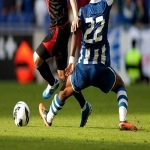
You have been officially diagnosed with an ACL tear. You now join the ranks of the athletes that have discussed this injury throughout the last 20 years. Now it is time to determine treatment. There are non-operative and operative options for an ACL tear. You and your surgeon should determine which one is right for you.
Non-operative treatment
If non-surgical treatment is decided, aggressive physical therapy and rehabilitation will necessary to strengthen the muscles surrounding the knee to improve stability. It is also possible that you may need a functional knee brace to help provide external stability. Dr. Gerald McNamara at Kansas City Bone & Joint Clinic notes that approximately “70% of people can function without an ACL”.
Deciding against surgery can be a reasonable option for patients with an isolated ACL tear (a tear that has no other injury such as a meniscus tear). In these cases, non-surgical treatment could be considered when the patient has a partial tear with no instability (giving way) in the knee or the patient has a sedentary lifestyle and would not need to have stability in the knee.
A non-operative approach could be considered initially but if symptoms begin to affect daily living or lifestyle, surgery should be considered. Dr. McNamara explains that if you are having “instability that affects your activities of daily living, you may want to re-consider a surgical approach.” He also goes on to state that approximately “95% (of patients) do well with an ACL reconstruction.”
It is also very common to see an ACL injury in combination with other injuries to the knee. If there are other injuries to the knee with an ACL tear, surgical intervention should be considered.
Operative treatment
There are several surgical options once you and your surgeon have decided that this is the best option for you as a patient. Studies have shown that the repaired ACL fails overtime. (source: AAOS) Therefore, the torn ACL is generally reconstructed by a substitute graft made of tendon. There are several options for grafting: the patellar tendon autograft (autograft means your own tissue), hamstring tendon autograft and allograft tissue (allograft means taken from a cadaver)
Dr. Robert Bruce at Kansas City Bone & Joint chooses either autograft or allograft patellar tendon. He explains “The fixation is better with bone to bone in the patellar tendon graft.” He goes on to note “This graft is more reliable in cutting sports and produces a more predictable outcome for the patient.”

The KCBJ Way
Most ACL cases at Kansas City Bone & Joint Clinic are performed outpatient (meaning that you go home the same day) at a surgical center. Once your case is scheduled, the surgeon’s nurse will provide you specific details and expected outcomes. Every case is different and it is difficult to determine how long it will take each individual patient to recover. ACL reconstruction should be performed to restore function and provide stability. Active patients involved in sports or jobs that require cutting, pivoting, turning or any other movements that require stability will need to consider surgical options.
Stay tuned for our next post discovering rehabilitation following a reconstruction.

